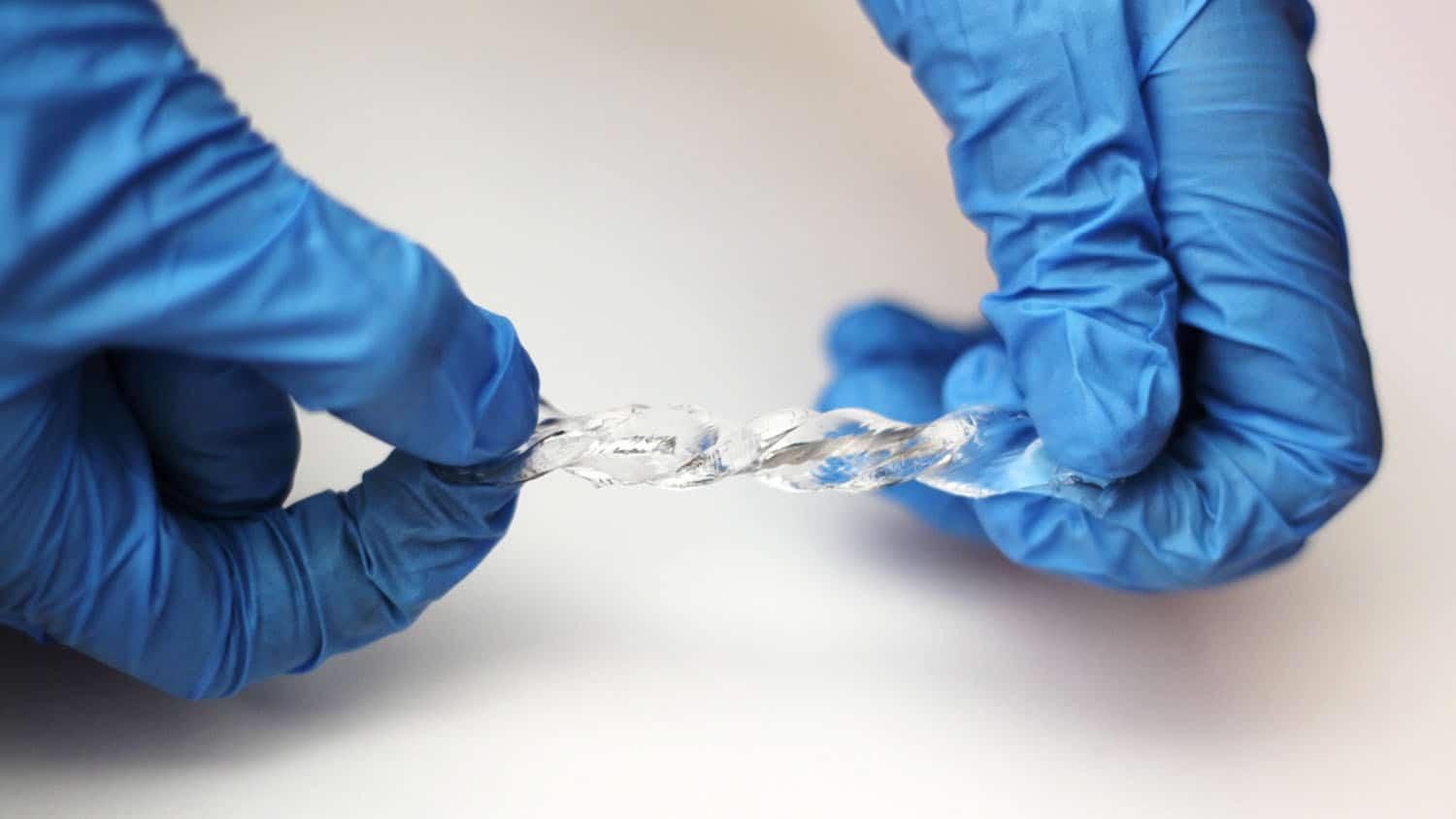Reviewed by Alex SmithSep 1 2021
A soft and stretchable device developed by researchers from the North Carolina State University (NC State) has the ability to convert movement into electricity and can function in wet surroundings.

Image Credit: Veenasri Vallem.
Mechanical energy — such as the kinetic energy of wind, waves, body movement and vibrations from motors — is abundant. We have created a device that can turn this type of mechanical motion into electricity. And one of its remarkable attributes is that it works perfectly well underwater.
Michael Dickey, Study Corresponding Author, Camille and Henry Dreyfus Professor of Chemical and Biomolecular Engineering, North Carolina State University
A liquid metal alloy made of indium and gallium forms the core of the energy harvester. The alloy is enveloped in a hydrogel, which is a soft and elastic polymer swollen with water.
The water present in the hydrogel includes dissolved salts known as ions. The ions tend to gather at the metal’s surface, which exhibits the potential to induce charge in the metal. By increasing the metal’s area, more surface is provided to attract a charge. This produces electricity that is captured by a wire fixed to the device.
Since the device is soft, any mechanical motion can cause it to deform, including squishing, stretching and twisting. This makes it versatile for harvesting mechanical energy. For example, the hydrogel is elastic enough to be stretched to five times its original length.
Michael Dickey, Study Corresponding Author, Camille and Henry Dreyfus Professor of Chemical and Biomolecular Engineering, North Carolina State University
In the experiments performed, scientists have discovered that deforming the device by just a few millimeters produces a power density of roughly 0.5 mW m−2. This amount of electricity is equivalent to that generated by many well-known classes of energy harvesting technologies.
However, other technologies don’t work well, if at all, in wet environments. This unique feature may enable applications from biomedical settings to athletic wear to marine environments. Plus, the device is simple to make. There is a path to increase the power, so we consider the work we described here a proof-of-concept demonstration.
Michael Dickey, Study Corresponding Author, Camille and Henry Dreyfus Professor of Chemical and Biomolecular Engineering, North Carolina State University
Already, the scientists have two relevant projects in progress.
The goal of the first project is to make use of the technology to power wearable devices by increasing the power output of the harvester. The second project assesses how this technology could be utilized to harness wave power from the ocean.
The paper titled “A Soft Variable-Area Electrical-Double-Layer Energy Harvester” has been published in the journal Advanced Materials. The first author of the study is Veenasri Vallem, a PhD student at NC State.
The study co-authors include Erin Roosa and Tyler Ledinh, who were undergraduates at NC State when the work was done; Sahar Rashid-Nadimi and Abolfazl Kiani, who were visiting scholars at NC State and are currently working at California State University, Bakersfield; and Woojin Jung and Tae-il Kim of Sungkyunkwan University in South Korea, who worked on the project while visiting NC State.
The work was done with financial support from NC State’s ASSIST Center, which is funded by the National Science Foundation under grant EEC-1160483. Further support for the study came from the Coastal Studies Institute of North Carolina and the Fostering Global Talents for Innovative Growth Program monitored by the Korea Institute for Advancement of Technology.
Journal Reference:
Vallem, V., et al. (2021) A Soft Variable-Area Electrical-Double-Layer Energy Harvester. Advanced Materials. doi.org/10.1002/adma.202103142.